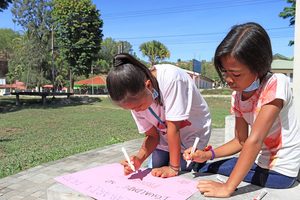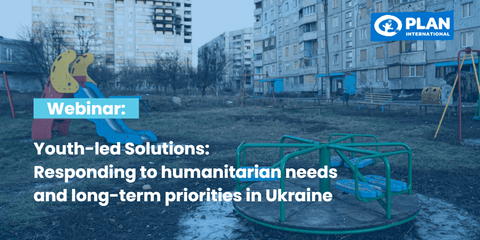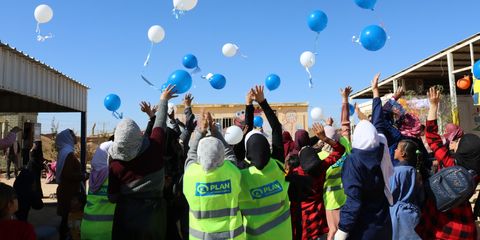Championing children rights means understanding their diversity
Plan International reacts to the European Commission's "EU Strategy on the Rights of the Child", a text that will set the tone for future internal and external policies of the block.

On 24 March, the European Commission published the EU Strategy on the Rights of the Child, reinforcing its commitment to protect, promote and fulfil children’s rights globally, and within multilateral settings. The text is ambitious and structured in 7 thematic pillars, with flagship points of Plan International well-reflected.
Child-mainstreaming EU policies
Overall, the strategy points in the right direction: mainstreaming child-centred approaches in all EU actions. Children will never be able to fully enjoy their rights if we work in silos. There are important links with initiatives like the Gender Action Plan III (key to upholding girls’ rights worldwide) and the external instruments of the Multiannual Financial Framework (2021-2027 MFF). Going deeper into mainstreaming, the strategy may have missed some coherence between its internal and external dimensions. Children’s rights need to be mainstreamed in all areas, including green transition and digitalisation, both absent from the external dimension but affecting millions of children.
Gender-sensitive approaches are a necessity, not a luxury
As pointed out in the strategy, the situation for girls continues to be particularly difficult. They keep being victims of discrimination and gender-based violence, including child, early and forced marriages, and harmful practices, like female genital mutilation. We, therefore, welcome the EU’s commitment to step up its efforts to prevent, combat and respond to all forms of violence, including gender-based violence. However, to live up to these commitments, we would have wished for a better mainstreaming of girls’ rights in the strategy’s external dimension, with a stronger focus on girls’ diverse backgrounds and the intersecting forms of discrimination they endure.
It will come as no surprise that we fully align with the needs-based approach to child support in humanitarian crises. The text explicitly indicates that aid needs to be gender and age-sensitive. Girls and boys have different needs. Children and adolescents have different needs. For humanitarian aid to be impactful, these differences must be recognised by applying a life-cycle approach which considers their needs and priorities at different stages of their lives. We also believe in putting children’s rights, especially those of marginalised girls, at the centre of disaster preparedness and response.
Then, we have global challenges, like COVID-19 and climate change, disproportionally impacting on girls and affecting their access to safe and quality education. Here, the strategy gives us a reason to celebrate with the decision to allocate 10% of the overall funding of the NDICI to education in the areas of Sub-Saharan Africa, Asia and the Pacific, and the Americas and the Caribbean. The EU will also continue dedicating 10% of humanitarian budget to education for emergencies and protracted crises. It is difficult to overstate the benefits of such decisions for children.
Age-sensitive approaches need to be recognised and correctly implemented
It is reassuring to see that the EU plans to strengthen child protection capacities and designate youth focal points within EU Delegations. As we wait to see how this will translate into practice, we stress the importance of having enough resources and capacities. Only this will ensure that these positions create real impact and sustainable change, together with children and young people. We hope in a continued dialogue on meaningful children and youth participation, and, for this reason, we look forward to the Youth Action Plan in 2022. This brings us to an important point that is perhaps not as clear as it should be in the text. Children and youth are two distinct groups, with different needs and experiences, such as gender-specific challenges faced by adolescent girls. This distinction should be understood and acknowledged if the strategy is to have a positive impact on the lives of both children and young people.
All in all, the European Commission seems to have successfully identified elements that can have a tangible positive impact on the lives of children and young people. Plan International looks forward to working alongside the EU to translate these words into action and reconfirm its role as champion of children’s rights and gender equality, in member countries and, crucially, beyond European borders.
Download options
Plan International EU Position
258 kb
Categories: Youth empowerment


